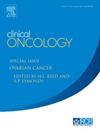Is the Juice Worth the Squeeze? Overall Survival Gain per Unit Treatment Time as a Metric of Clinical Benefit of Systemic Treatment
IF 3.2
3区 医学
Q2 ONCOLOGY
引用次数: 0
Abstract
Aims
Novel systemic therapeutic options such as enzyme inhibitors and monoclonal antibodies have transformed the practice of medical oncology in the recent past. However, survival gains remain modest in most cases. Quantifying the magnitude of benefit against financial and nonfinancial toxicity of treatment is pivotal in deciding treatment. We describe a novel metric which can be used to assess effectiveness of novel therapeutics for incurable cancers along with other established tools.
Materials and methods
Sixty indications of 30 novel therapeutic agents were selected for analysis. The median overall survival gain was divided by the median duration of treatment to obtain the overall survival gain per treatment time, which was the primary end-point of the study. This parameter was compared with the European Society of Medical Oncology Magnitude of clinical benefit scale (ESMO-MCBS) score. Spearman’s rank correlation coefficient was used to test the association between the novel metric and the ESMO-MCBS scores.
Results
The median overall survival per unit treatment time ranged from 0.68 (range: 0.2–0.51). Only 18/60 indications had a ratio greater than 1, while 13/60 indications had a ratio less than 0.5. The median treatment duration was not mentioned in 12 indications and median progression-free survival was substituted for the analysis. The ESMO-MCBS score was available for 49 of the indications. The Spearman’s rank correlation coefficient was 0.44575 and showed a statistically significant association between survival gain per unit treatment time and the ESMO-MCBS score (P = 0.00133).
Conclusion
Along with other metrics, the ratio of survival gain over treatment duration is a useful parameter to assess effectiveness of novel therapeutics in the palliative setting.
榨汁值得吗?单位治疗时间的总生存增益作为全身治疗临床获益的指标
新的系统治疗选择,如酶抑制剂和单克隆抗体在最近的过去已经改变了医学肿瘤学的实践。然而,在大多数情况下,生存率的提高仍然有限。量化治疗的经济和非经济毒性的效益程度是决定治疗的关键。我们描述了一种新的指标,可用于评估治疗无法治愈的癌症的新疗法的有效性以及其他已建立的工具。材料与方法选取30种新型治疗药物的60种适应症进行分析。中位总生存增加除以中位治疗持续时间,得到每个治疗时间的总生存增加,这是研究的主要终点。将该参数与欧洲肿瘤医学学会临床获益程度量表(ESMO-MCBS)评分进行比较。采用Spearman等级相关系数检验新量表与ESMO-MCBS评分之间的相关性。结果每单位治疗时间的中位总生存期为0.68(范围:0.2-0.51)。只有18/60指征的比值大于1,13/60指征的比值小于0.5。在12个适应症中没有提到中位治疗持续时间,中位无进展生存期取代了分析。ESMO-MCBS评分可用于49个适应症。Spearman等级相关系数为0.44575,单位治疗时间生存增益与ESMO-MCBS评分有统计学意义(P = 0.00133)。结论与其他指标一样,生存增益与治疗时间之比是评估新疗法在姑息环境下有效性的有用参数。
本文章由计算机程序翻译,如有差异,请以英文原文为准。
求助全文
约1分钟内获得全文
求助全文
来源期刊

Clinical oncology
医学-肿瘤学
CiteScore
5.20
自引率
8.80%
发文量
332
审稿时长
40 days
期刊介绍:
Clinical Oncology is an International cancer journal covering all aspects of the clinical management of cancer patients, reflecting a multidisciplinary approach to therapy. Papers, editorials and reviews are published on all types of malignant disease embracing, pathology, diagnosis and treatment, including radiotherapy, chemotherapy, surgery, combined modality treatment and palliative care. Research and review papers covering epidemiology, radiobiology, radiation physics, tumour biology, and immunology are also published, together with letters to the editor, case reports and book reviews.
 求助内容:
求助内容: 应助结果提醒方式:
应助结果提醒方式:


